Natrafiłem na ciekawe wyniki pomiary temperatury wśród pensjonariuszy domu spokojnej starości… Oto rezultaty:
- Najstarsze osoby był najzimniejsze
- Teperatura ciała najstarszych osób nie wykazywała dużej zmiany dobowej
- Większość staruszków w ogóle nie osiągała temperatury ciała 37*C
- Zwiększenie temperatury ciała w ciągu dnia było największe wśród młodszych pensjonariuszy
Dla porównania noworodki mają często temperaturę w okolicy 37-37.5*C.
Jeśli Twój lekarz bagatelizuje Twoje odczucie zimna i niską temperaturę ciała, to najlepiej zmień lekarza, bo Twoje objawy sugerują, że masz większą szansę umrzeć, niż ciepłe osoby!
Nie czekaj, już dziś zamów Thiroyd, TR Thyroid lub Thyroid-S i wreszcie bądź ciepły!
Źródło:
Older is colder: temperature range and variation in older people.
RESULTS:
The average age of subjects was 80.7. Temperatures ranged from 94.0 degrees F to 99.6 degrees F. In nursing home subjects, the 6 a.m. mean temperature was 97.3 degrees F, 4 p.m. mean was 97.4 degrees F, and 10 p.m. mean was 97.8 degrees F. The single midday mean temperature in community dwellers was 97.7 degrees F. Ninety-seven of 100 (97%), 94 of 100 (94%), and 83 of 96 (86%) recordings were below 98.6 degrees F in nursing home residents at 6 a.m., 4 p.m., and 10 p.m., respectively. Similarly, 45 of 50 (90%) community dwellers had midday temperatures below 98.6 degrees F. Repeated-measures analysis demonstrated an increase in temperature during the day. The increase was greatest in the youngest old, with no significant change in body temperature over the course of the day in the oldest old.
CONCLUSION:
Older subjects have mean oral body temperatures lower than 98.6 degrees F. Relatively few even achieve this temperature. In nursing home residents, the oldest were coldest and failed to demonstrate a diurnal rise in body temperature.






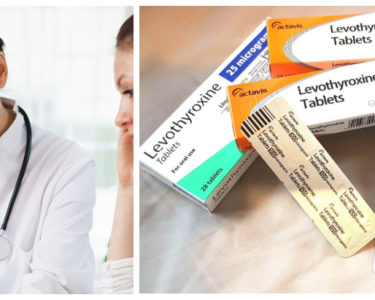
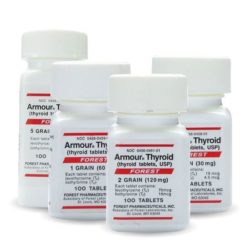
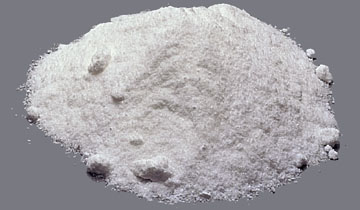
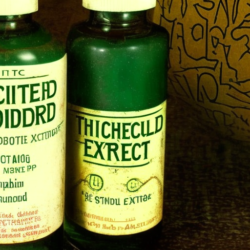


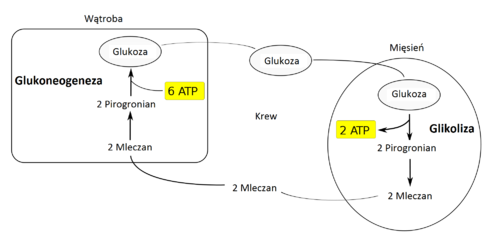
Witam mam pytanie odnośnie naturalnego T3 T4 chciałbym zakupić opakowanie dla mamy którą lekarze pare lat (leczą ) a jest coraz gorzej
http://www.holistic-hypothyroidism-solutions.com/reverse-t3.html
http://www.functionalps.com/blog/2017/01/23/t3-therapy-to-reset-low-body-temperature-in-hypothyroidism/
http://sygnaturazdrowia.pl/witamina-c-tarczyca/
Where Has all the Thyroid Gone? Part 2
[…]
“In recent years it has been discovered that D2 activity is enhanced by the presence of T2, a form of thyroid hormone that has traditionally been considered inactive and of no importance.
It has also been found that T2 plays a crucial role in energy production in the liver, heart, and skeletal muscles. T2 acts quickly and directly to increase the metabolic rate by facilitating oxygen use, while T3 acts more slowly and indirectly through the activation of various enzymes. While very little is known about T1 activity, it now appears likely that it too is an active hormone, and not simply a breakdown product of T4 and T3.
In an individual with normal thyroid function a sequence of events is always occurring. Under the influence of TSH the thyroid gland is producing T4, the storage form of thyroid hormone, T3, the primary active form of thyroid hormone, T2, the form of thyroid hormone required to facilitate the conversion of T4 to T3 at the cellular level, and T1, of as yet unknown significance. As the levels of these hormones rise, pituitary production of TSH falls. When the production of thyroid hormone drops below an optimum level the pituitary gland increases the release of TSH. This feedback mechanism keeps thyroid activity in balance.
[…]
If an individual is unable to effectively convert stored T4 to the active hormone T3 or if thyroid antibodies that block thyroid hormone activity are present the TSH level will not rise. That person will exhibit the signs and symptoms of hypothyroidism, but the diagnosis will not be made and treatment will not be instituted.
It is not necessary that all forms of thyroid hormone be present for pituitary release of TSH to return to normal levels. Any form of thyroid hormone is independently capable of telling the pituitary gland that thyroid activity is adequate. Therefore administration of T4 alone, T3 alone, or even T2 alone will effectively normalize TSH levels.
This presents a serious challenge for individuals who have lost normal thyroid function. If levothyroxine (T4), the storage form of thyroid hormone, is supplemented the TSH level will fall. It is therefore possible to normalize levels of both T4 and TSH with supplementation of levothyroxine alone. In the absence of T2, however, T4 will not be efficiently converted to T3 and thyroid hormone activity will remain low. This is why many people who take levothyroxine alone continue to experience signs and symptoms of hypothyroidism while exhibiting perfectly normal and balanced TSH and T4 blood test results.
Desiccated thyroid, which is extracted from animal thyroid glands (predominantly those of pigs slaughtered for pork products), contains all forms of thyroid hormone produced by a normally functioning thyroid gland. Since T2 is available, the body can effectively convert the T4 that is present to T3 and normal thyroid function is restored.
Very few physicians are aware of the role of T2 in the body. Some recognize that T4 conversion to T3 must take place for thyroid function to be restored, but most do not. They prescribe levothyroxine, check T4 and TSH blood levels, and assume that anyone who continues to complain of feeling tired, cold, constipated, and losing hair is suffering from depression or some other malady totally unrelated to thyroid activity.
The ignorance of physicians in regard to desiccated thyroid is astounding. Many patients who have come to me in search of an answer to their symptoms have reported being told that taking a drug that contains an ingredient from an animal source is inherently dangerous. It is difficult for me to believe that the physicians proffering such advice are vegans who never consume any animal substance. Some patients have been advised that they will put themselves at risk of mad cow disease if they take a whole thyroid product. How a substance derived exclusively from pigs is supposedly capable of producing mad cow disease is a mystery to me. Nevertheless, the vast majority of physicians steadfastly refuse to prescribe desiccated thyroid to individuals who continue to exhibit signs and symptoms of hypothyroidism with levothyroxine therapy.
Some years ago I cared for an elderly woman who developed severe fecal impactions due to hypothyroidism, even though she was taking Synthroid. When changed to Armour Thyroid her bowel function returned to normal. Unfortunately, when she required hospitalization for any reason she went to the University of Oklahoma Health Sciences Center. After each hospital stay she was discharged on Synthroid and shortly thereafter presented at my office with an impaction. After one of her hospitalizations I received a copy of her discharge summary in which the resident physician stated, “Her LMD (local medical doctor – a term of disdain often used by physicians in university centers when referring to community-based practitioners) had her on Armour Thyroid. I am placing her on natural thyroid by prescribing Synthroid.”
Such a misunderstanding might be excused in a physician-in-training, but it is difficult to do so when it comes from a high-ranking government official. Mary Parks, M.D., is Director of the FDA’s Division of Metabolic and Endocrine Drug Products. She has been with FDA for 10 years. Dr. Parks graduated from Georgetown University Medical School in Washington, D.C., where she completed a residency in internal medicine and a fellowship in endocrinology and metabolism.
In response to the question, “What medications are approved to treat hypothyroidism?” she states, “Medications for underactive thyroid work by replacing hormone that’s missing. The approved medication for this indication is levothyroxine sodium, which is identical to the natural thyroid hormone produced by the body.”
Her statement reveals a profound lack of understanding of thyroid function. Levothyroxine is not the natural thyroid hormone produced by the body; it is one of the natural thyroid hormones produced by the body. Levothyroxine is not the active form of thyroid hormone at the cellular level, and replacement of levothyroxine alone is often ineffective in restoring normal thyroid activity.
Synthesized levothyroxine may be chemically identical to that produced by the body, but it is not energetically identical. All substances are composed of atoms. Each atom has a nucleus made up of protons and neutrons with electrons in orbit around the nucleus. The electrons in the atoms of living organisms, and substances derived from them, are spinning counter-clockwise as they revolve around the nucleus. Atoms in substances that are manufactured or refined have a clockwise or a mixed spin direction, and are not viewed in the same manner by the human body.
Unfortunately, while all medical schools require that students complete a course in biochemistry, none require them to take a course in biophysics. Nearly all physicians are therefore blissfully unaware that the drugs they are prescribing are capable of adversely affecting the electromagnetic nature of the body.
Since desiccated thyroid is the only available thyroid replacement product that provides all forms of the hormone required for proper use in the body its disappearance from the marketplace is a matter of grave concern. Tracking down the reasons for the shortage has been challenging, but I have identified several factors that appear to explain the mysterious disappearance of desiccated thyroid from the marketplace. I am cautiously optimistic that the current situation will be resolved and that individuals who depend upon desiccated thyroid for their well-being will once again be able to obtain it without difficulty.
One factor that must be considered is demand for desiccated thyroid products. The number of people who are seeking whole thyroid replacement has increased dramatically in recent years. This is largely due to the Internet. People who previously accepted their physicians’ statements that their hypothyroid symptoms were not due to inadequate thyroid support are discovering that an effective alternative to levothyroxine is available. Manufacturers were unprepared to respond to the increase in demand for their products.
Another factor is the inherent instability of thyroid hormones. The activity of any thyroid hormone product tends to diminish over time. This means that it is not possible to stockpile supplies. Thyroid hormone products typically have an expiration date of two years or less from the time of manufacture.
Manufacturers typically keep tablets from each lot of product on hand and re-analyze them over time to insure that bottles from a particularly lot that may still be available in the marketplace have not lost their effectiveness. Between 1991 and 1997 no less than ten recalls of levothyroxine products involving 150 lots and over 100 million tablets were issued.
In 2005 Forest Laboratories found that activity of some lots manufactured in 2003 had declined. As a result of this they issued a recall of any remaining bottles from those lots. I have seen statements from some seeking to discredit the use of desiccated thyroid that incorrectly interpret the nature of the recall. One headline, for example, read, “An FDA enforcement removed more than half a million bottles of Armour Thyroid from US pharmacies in 2005 due to unstable concentrations of thyroid hormone in the preparation.” This was a total misrepresentation of what actually occurred. While the FDA reported the recall, it did not initiate the action; Forest Laboratories acted on the basis of its analysis. While 500,000 bottles had been manufactured in the lots subject to recall, very few bottles were actually returned, since most had been purchased and used before the time-produced decline in activity had occurred.
While I cannot state this with certainty, it appears that in response to the recall Forest suspended manufacture of higher strengths of Armour Thyroid, which had been less commonly prescribed and therefore more likely to remain on pharmacy shelves for longer periods of time.
Forest also reformulated the product. I believe this was an effort to achieve a longer shelf life. Unfortunately, the new formulation proved to be less bioavailable, meaning that many people who had been using Armour Thyroid for years developed signs and symptoms of hypothyroidism because the new formulation was not allowing the hormones to be absorbed and utilized.
When challenges with the bioavailability of Armour Thyroid became known many physicians began prescribing Westhroid and Nature-Throid, products manufactured by RLC Laboratories. RLC Laboratories initially believed that they could supply the demand, but as shortages of Armour Thyroid persisted, stocks of Westhroid and Nature-Throid were depleted.
The challenge was made much more acute by the FDA, which shut down the manufacturing of generic desiccated thyroid. In a letter to Joseph Errigo, President of Time-Cap Laboratories, Inc. dated April 10, 2009 the FDA demanded that Time-Cap cease their manufacturing of Thyroid Tablets, declaring them “unapproved new drugs” that are “are not generally recognized as safe and effective for their labeled uses.”
The declaration that a drug in constant use since the late 1800s and which has one of the strongest safety records in the industry is an unapproved new drug that is not generally recognized as safe and effective defies explanation. Desiccated thyroid has been recognized and accepted by the U.S. Pharmacopeia, for over a century. The U.S. Pharmacopeia is an official public standards–setting authority for all prescription and over–the–counter medicines and other health care products manufactured or sold in the United States. The USP is a non-governmental, not-for-profit public health organization whose independent, volunteer experts work under strict conflict–of–interest rules to set its scientific standards. The USP was established in 1820 and had been setting drug standards for nearly a century before the FDA was created by congress.
The FDA did not obtain the right to determine the safety of new drugs until 1938, at which time drugs that were recognized by the USP were grandfathered and were not required to submit evidence of their safety and effectiveness to the FDA.
In 1962, in the wake of the thalidomide tragedy in which many children were born with severe birth defects related to the use of the drug during pregnancy, the FDA was granted expanded powers to determine the efficacy and safety of new drugs. They were also given the authority to require drugs that had been approved as safe between 1938 and 1962 to demonstrate their effectiveness in order to remain on the market. Drugs that had been approved by the USP prior to 1938 were not subject to FDA scrutiny under the amendment. This applied to desiccated thyroid, which had been in use for approximately 50 years by 1938.
The FDA was not content with the powers that it had been given by congress to regulate the effectiveness of drugs introduced after 1938. In the early 1970s they decided to stop the sale of a drug called phentylenetetrazole (primary brand name Metrazol) because they deemed it ineffective. Metrazol had been introduced in the early 1930s, and therefore had been grandfathered in the 1938 and 1962 legislation. The FDA’s decision to withdraw phentylenetetrazole from the market was challenged in court. The case went to the Supreme Court in 1973. In Weinberger vs. Bentex Pharmaceuticals the Supreme Court ruled that the FDA had the authority to administratively determine what constituted a “new” drug. The FDA had established supreme and unilateral control over drug availability in the United States. Sales of phentylenetetrazole ended in 1980.
On the basis of the 1973 Supreme Court decision the FDA is able to unilaterally and arbitrarily declare any substance to be an “unapproved new drug” regardless of the length of time it has been in use and part of the USP formulary. They used this unrestricted dictatorial power to stop the production and sale of generic desiccated thyroid products in the United States.
The final piece of the puzzle is perhaps the most significant and also the most distressing. There is currently only one source of raw desiccated thyroid for use in the manufacturing of thyroid medication in North America. It is American Laboratories of Omaha, Nebraska.
American Laboratories extracts a number of substances from tissues it obtains from meat processing plants. These include such things as chondroitin sulfate, pancreatic enzymes, and glandulars including thyroid.
When in house supplies of raw desiccated thyroid were depleted earlier this year Forest Laboratories and RLC Labs were unable to replenish them because American Laboratories had stopped shipment. There is some speculation that American Laboratories was facing challenges from the FDA, but this is not certain. What is known is that American Laboratories ran afoul of the EPA.
On June 16, 2009 the EPA issued a statement that $440,000 in civil penalties had been levied against American Laboratories. American Laboratories admitted no liability in the action. The company was in the process of installing new controls to recapture isopropyl alcohol and had agreed to submit monthly reports of air emissions to the EPA and the City of Omaha. This is a likely explanation of American Laboratories’ inability to provide timely product shipment.
At this time American Laboratories, Forest Laboratories, and RLC Labs report that they are actively engaged in manufacturing their respective products. Each has stated that they are committed to resolving the shortage of whole thyroid that currently exists. This is good news. We can only hope that the FDA does not force these companies to cease production and distribution of thyroid as they did Time-Cap Labs.
http://www.drdalepeterson.com/thyroidgone2_0661eff.html
edytuj
https://academic.oup.com/icb/article/49/2/155/641567/Evolutionary-roots-of-iodine-and-thyroid-hormones
http://iodineresearch.com/research.html
Witam czy dalej można zamawiać u Państwa NDT?? Bardzo chciałbym zakupić Thyroid-S. Prosze o kontakt!
3,5-Diiodothyronine
Biological effects
3,5-T2 is an active thyroid hormone. It stimulates the TR-beta receptor for thyroid hormones and thus increases energy expenditure.[1][2] It has agonistic (thyromimetic) effects at myocardial tissue and pituitary, which results in 3,5-T2 to suppress TSH release.[3][4] 3,5-T2 is an allosteric regulator of the cytochrome c oxidase, the complex IV of the electron transport chain. It increases its activity by preventing the interaction of adenosine triphosphate (ATP) as an allosteric inhibitor.[5]
Clinical significance[edit]
In nonthyroidal illness syndrome 3,5-T2 concentrations are increased.[6][7] This could explain why patients with low T3 syndrome don’t benefit from substitution therapy with thyroid hormones.[6]
References[edit]
Jump up ^ Goglia F (2014). “The effects of 3,5-diiodothyronine on energy balance”. Frontiers in Physiology. 5: 528. doi:10.3389/fphys.2014.00528. PMID 25628573.
Jump up ^ Lombardi A, Senese R, De Matteis R, Busiello RA, Cioffi F, Goglia F, Lanni A (2015). “3,5-Diiodo-L-thyronine activates brown adipose tissue thermogenesis in hypothyroid rats”. PLOS ONE. 10 (2): e0116498. doi:10.1371/journal.pone.0116498. PMC 4319745. PMID 25658324.
Jump up ^ Padron AS, Neto RA, Pantaleão TU, de Souza dos Santos MC, Araujo RL, de Andrade BM, da Silva Leandro M, de Castro JP, Ferreira AC, de Carvalho DP (Jun 2014). “Administration of 3,5-diiodothyronine (3,5-T2) causes central hypothyroidism and stimulates thyroid-sensitive tissues”. The Journal of Endocrinology. 221 (3): 415–27. doi:10.1530/JOE-13-0502. PMID 24692290.
Jump up ^ Jonas W, Lietzow J, Wohlgemuth F, Hoefig CS, Wiedmer P, Schweizer U, Köhrle J, Schürmann A (Jan 2015). “3,5-Diiodo-L-thyronine (3,5-t2) exerts thyromimetic effects on hypothalamus-pituitary-thyroid axis, body composition, and energy metabolism in male diet-induced obese mice”. Endocrinology. 156 (1): 389–99. doi:10.1210/en.2014-1604. PMID 25322465.
Jump up ^ Arnold S.; Goglia F.; Kadenbach B. (1998). “3,5-Diiodothyronine binds to subunit Va of cytochrome-c oxidase and abolishes the allosteric inhibition of respiration by ATP.”. Eur J Biochem. 252 (2): 325–330. doi:10.1046/j.1432-1327.1998.2520325.x. PMID 9523704.
^ Jump up to: a b Dietrich JW, Müller P, Schiedat F, Schlömicher M, Strauch J, Chatzitomaris A, Klein HH, Mügge A, Köhrle J, Rijntjes E, Lehmphul I (Jun 2015). “Nonthyroidal Illness Syndrome in Cardiac Illness Involves Elevated Concentrations of 3,5-Diiodothyronine and Correlates with Atrial Remodeling”. European Thyroid Journal. 4 (2): 129–37. doi:10.1159/000381543. PMC 4521060. PMID 26279999.
Jump up ^ Pinna G, Meinhold H, Hiedra L, Thoma R, Hoell T, Gräf KJ, Stoltenburg-Didinger G, Eravci M, Prengel H, Brödel O, Finke R, Baumgartner A (May 1997). “Elevated 3,5-diiodothyronine concentrations in the sera of patients with nonthyroidal illnesses and brain tumors”. The Journal of Clinical Endocrinology and Metabolism. 82 (5): 1535–42. doi:10.1210/jcem.82.5.3939. PMID 9141546.
https://en.wikipedia.org/wiki/3,5-Diiodothyronine
https://en.wikipedia.org/wiki/Category:Iodinated_tyrosine_derivatives
http://drsircus.com/light-heat/low-body-temperature-symptoms-causes-treat/
Guggul
This is an extract of the sap from an Indian myrrh tree, which enhances the conversion of T4 to T3 in your body.30 Traditionally, the supplement was used to treat low metabolism, a symptom of suboptimal thyroid function. In an animal model, researchers found rats given guggul had increased uptake of iodine from their food and increased activity of thyroid enzymes with increased oxygen consumption.31
The supplement also demonstrated increased blood concentration of T3 hormone from T4 conversion,32 and increased the activity of the enzyme responsible for converting T4 to T3.33 It is likely unsafe during pregnancy and you should thoroughly evaluate the interactions with your physician before using it.34
http://articles.mercola.com/sites/articles/archive/2017/05/31/screening-thyroid-drugs-often-fail-to-relieve-symptoms.aspx
http://kopalniawiedzy.pl/mitochondria-temperatura-lancuch-oddechowy-enzymy-cieplo-Dominique-Chretien,26400
https://www.biochemnordic.com/measure-thyroid-function/